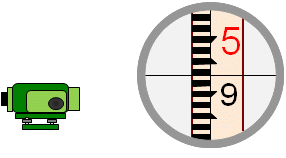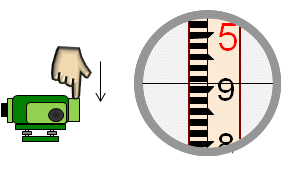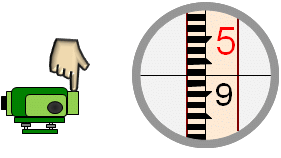1. Compensator Check
a. Description
The compensator maintains a horizontal line of sight when the instrument is slightly out of level. A sticking compensator will not react correctly if the instrument's level condition is disturbed.
Checking the compensator is quick and should be done each day the instrument is used.
b. Check
|
(1) Set up and level the instrument. (2) Clear parallax. |
 |
| (3) Sight a level rod and note the reading. |  |
| (4) While sighting the rod, use a finger to firmly and gently press down on the forward end of the telescope. This will deflect the line of sight changing the reading. |  |
| (5) While holding the telescope depressed, the crosshairs should return to the initial reading. This is the compensator reacting as it should. |  |
| (6) Remove pressure from the telescope front; the line of sight will go up and then... |  |
|
(7) ... should return to the inital rod reading. |
 |
| Figure F-1 Compensator Check |
|
Another way to check the compensator is to take a reading with the circular bubble centered, turn one of the leveling screws making the instrument slightly out of level, and check the reading again. If the second reading matches the first then the compensator is operating correctly. This must be done with care as turning a level screw too much can change the instrument’s elevation which can affect the second rod reading.
c. Behavior
A level with a sticky or inoperable compensator cannot be reliably used. Its behavior is random and is not apparent when reading a rod.
d. Compensation
If the compensator does not respond correctly, it should be sent in for repair. The internal mechanism is delicate and sealed from dust and should only be adjusted by a qualified service technician.
The remainder of the checks in this chapter should only be performed if the compensator is working correctly.